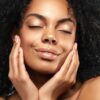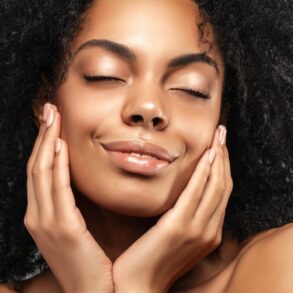
The sentiment expressed in the India Arie song, “I Am Not My Hair,” resonates with many people because it promotes the idea that individual beauty and identity should not be solely defined by physical appearance, including one’s hair. It encourages self-acceptance, empowerment, and confidence, irrespective of societal beauty standards.
However, as the song points out, this message of hair empowerment is not universally applicable to everyone, especially those who may experience hair loss for various reasons. Hair loss can be emotionally challenging, impacting one’s self-esteem and sense of identity. While some men may experience hair loss as they age, Black women may face hair identity issues from very young ages. Such factors, and the relationship with hair can be complex, sometimes influenced by the experiences of their mothers or societal pressures.
In the context of Black communities, hair acceptance takes on additional layers of significance. Historically, Eurocentric beauty standards have often disregarded natural Black hair textures, leading to discrimination and a lack of representation. This has resulted in some individuals altering their hairstyles or using extensions and weaves to conform to societal norms.
Hair acceptance, therefore, is not a one-size-fits-all solution. It requires recognizing the diverse experiences and emotions that people may have about their hair. It’s essential to challenge and redefine prevailing beauty standards to be inclusive of all hair types and textures. Promoting self-love, embracing one’s natural hair, and creating an environment of acceptance and support can help individuals navigate the complexities of hair loss and find empowerment in their unique identities.
Ultimately, the goal should be to foster an environment where people are comfortable with their hair choices, whether they decide to embrace their natural hair, wear protective styles, or explore other options. Empowering individuals to make choices that align with their own sense of self can lead to greater emotional well-being and a healthier relationship with their hair and overall appearance.
Here are 8 practical ways to deal with drastic hair loss. Each step provides a different avenue for individuals to cope with and address the emotional and physical aspects of hair loss.
RELATED: 10 Surprising Reasons You’re Losing Your Hair
1. Acknowledge the change
Sometimes, it’s easier to avoid dealing with the issue than addressing it. We can hide hair loss under toupees, wigs, braids, you name it, there’s a solution for covering these changes. When you acknowledge the chance, it makes you more receptive to doing something that will remedy the situation from the roots.
2. Seek emotional support
Dealing with hair loss can be emotionally challenging. Reach out to supportive friends, family, or support groups (you could even join Facebook groups with other people going through the same thing) who can offer understanding and empathy. Counseling or therapy can also be beneficial in managing the emotional impact of hair loss.
3. Explore treatment options
Depending on the cause and severity of your hair loss, your healthcare professional may suggest various treatments. These can include
This post was originally published on this site be sure to check out more of their content.








